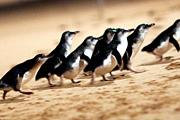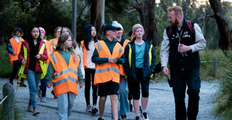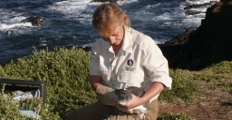Loud vessel noise affects fur seal behaviour: study
A new study has identified that airborne vessel noise can affect the behaviour of Australian fur seals at their largest colony near Phillip Island, and recommended better protections.
For the first time, a team of researchers, led by University of Sydney PhD Candidate Jessalyn Taylor, has examined seasonal differences in the behavioural responses of seals near Seal Rocks when exposed to loud marine watercraft noise.
Seal Rocks is home to the country’s largest colony of Australian fur seals, with an estimated 20,000 seals and around 25% of the species’ population. Yet, the area has a small vessel exclusion zone during the pupping and breeding season when vessel traffic is at its peak.
The study, Behavioural response of Australian fur seals to vessel noise during peak and off-peak human visitation, found exposure to boat engine noise above 75 dB resulted in short-term behavioural disturbances amongst the seals, such as decreased nursing and increased vigilance, including paying attention to the visitors rather than resting.
The report, which is available online in the Marine Pollution Bulletin and will published in print in November, found while behavioural responses were limited to the period of noise exposure, frequent disturbances could lead to fur seals suffering more population-wide consequences.
Researchers conducted surveys over four fieldwork seasons between January 2022 and August 2023 using pre-recorded vessel noise from an operating outboard motor typical of vessels visiting Seal Rocks. They assessed seal responses to low (64-70 dB), medium (71-75 dB) and high (76-80 dB) levels of the noise.
“Findings of our study shows that behavioural changes in seals exposed to loud motor vessel noise were limited to the period of noise exposure, but created increased vigilance amongst the seals and reductions in nursing and rest during those times,” Ms Taylor said.
“We also found that high level noise exposure was more likely to cause seals to move away from the focal area compared to low and medium level noise, likely because they didn’t like it or perceived it as a threat.”
Ms Taylor said it was important that the impacts of human visitation at sensitive marine sites were well understood to ensure the adequate protection of seals and effective management of the area.
“This study is one of very few to evaluate the impacts of airborne vessel noise in pinnipeds and is the first to examine seasonal differences in behavioural responses,” Ms Taylor said.
“Through this study we have been able to make comparisons between colony sites and species that will hopefully lead to better protection for Australian fur seals at Seal Rocks and other marine areas with high human traffic and interaction.
“Human activity is changing the environment faster than many species can adapt, if they can even adapt at all, so it is vital that regulations to protect wildlife are frequently reviewed to ensure they are effective.”
The project was supported by an international and multidisciplinary team, including Phillip Island Nature Parks Senior Scientist Dr Rebecca McIntosh, Associate Professor Rachael Gray from the Sydney School of Veterinary Science, and Paris Saclay Institute of Neuroscience Senior Researcher Dr Isabelle Charrier.
Funding for the research project was provided by the Foundation for Australia's Most Endangered Species (FAME), and the Holsworth Wildlife Research Endowment & the Ecological Society of Australia, and CNRS (IRP SocNetMM).
To read the study in full, click here.
The Victorian Government has requirements for water safety around marine mammals: https://www.wildlife.vic.gov.au/our-wildlife/whales,-dolphins-and-seals/water-safety-around-marine-





















